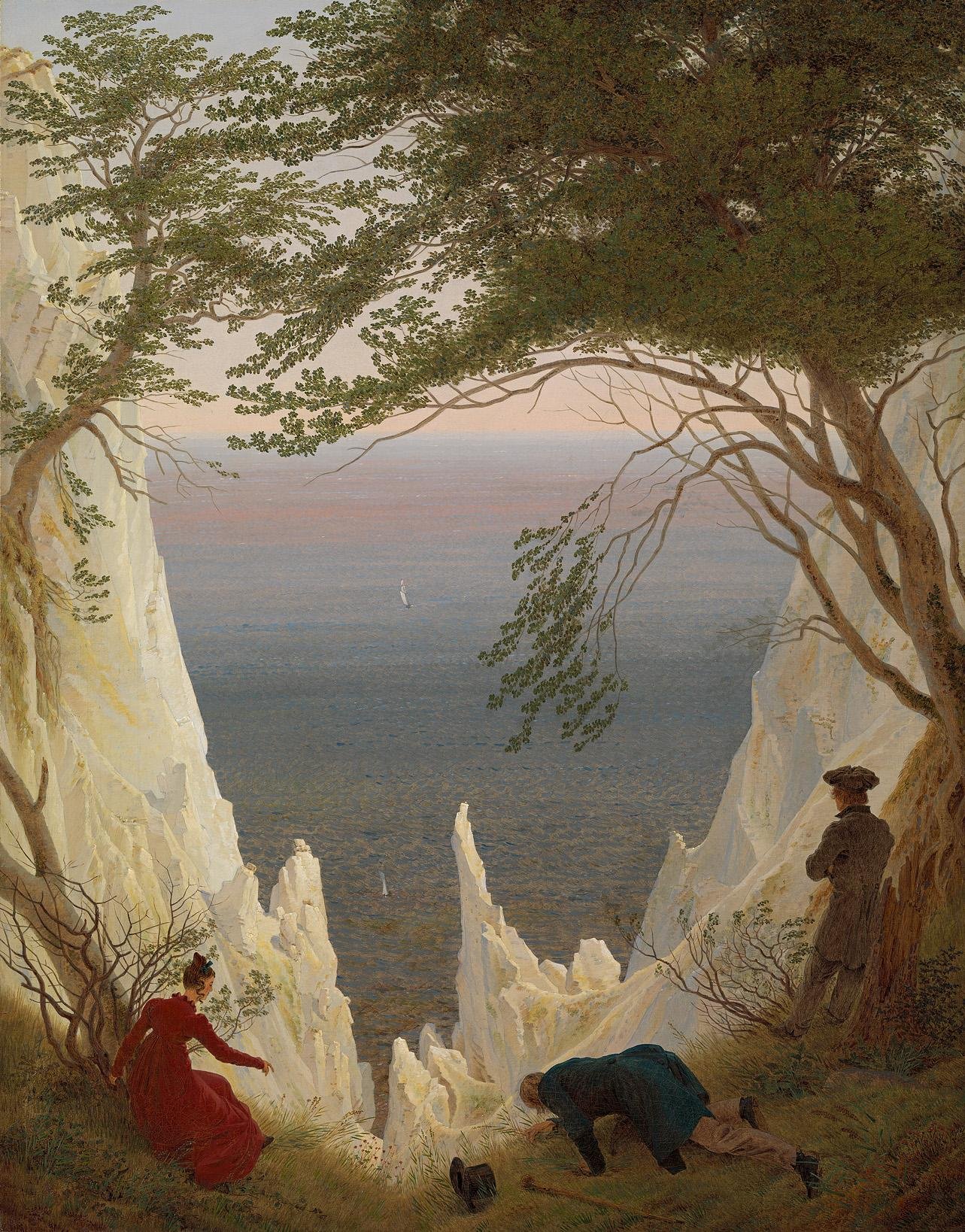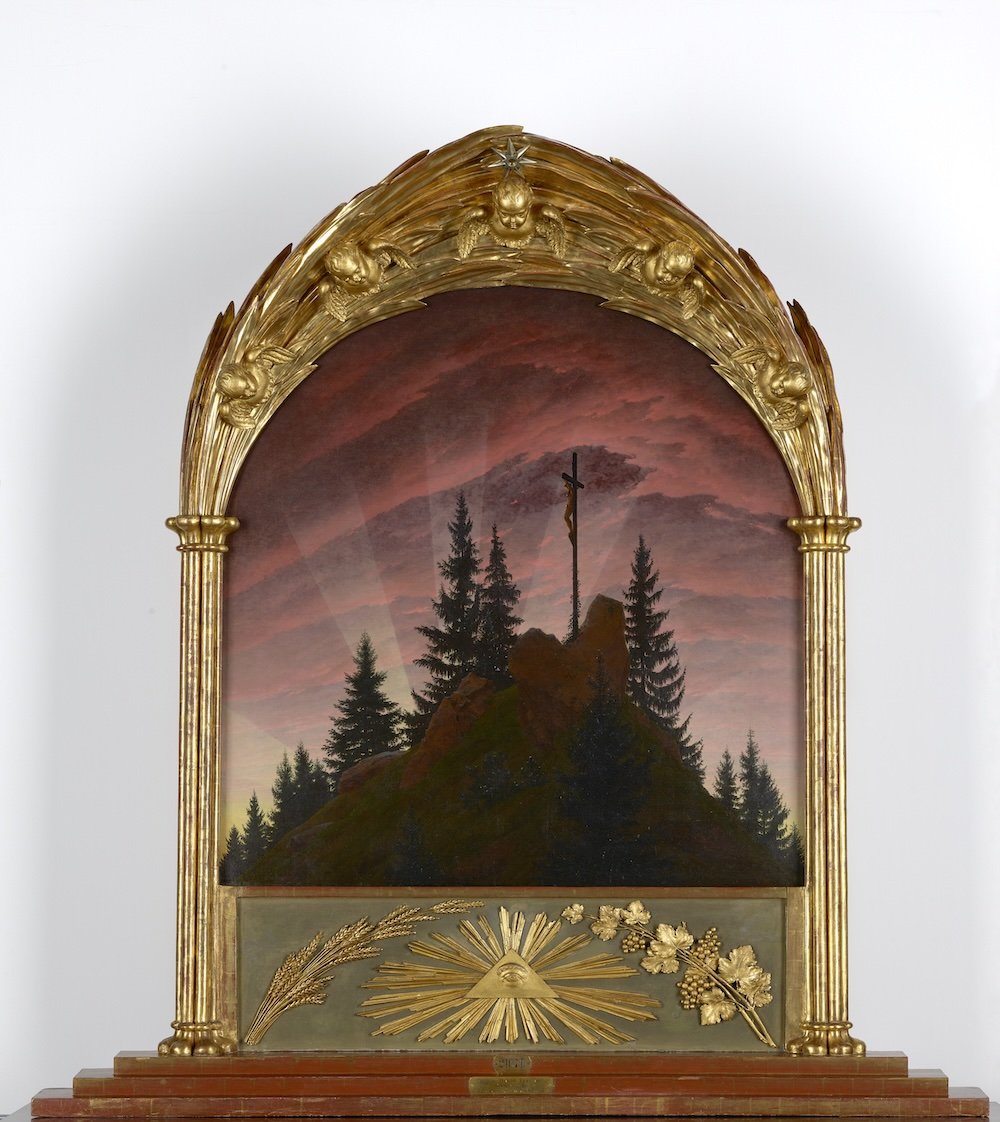Caspar David Friedrich
Chalk Cliffs on Rügen, 1818

Caspar David Friedrich
Chalk Cliffs on Rügen, 1818
Kunst Museum Winterthur, Stiftung Oskar Reinhart, Ankauf, 1930
Foto: SIK-ISEA, Zürich (Philipp Hitz)
Caspar David Friedrich is the most important representative of early German Romanticism. Born in a small town next to the Baltic Sea, he was very familiar with the rough nature of northern Germany and the nearby island of Rügen with its famous cliffs. Even after moving to Dresden in 1798, he often returned here.
In 1808 his painting Cross in the Mountains caused a polemic in Dresden. For instead of a religious painting in traditional manner, he presented a landscape. Thus provoking an unprecedented dispute in Germany about what a work of art is and what it has to depict. By representing the divine through nature itself, Friedrich transcended the established separation of pictorial genres and created a manifest of the romantic feeling for nature.

Caspar David Friedrich
Das Kreuz im Gebirge (Tetschener Altar), 1807/1808
Albertinum, Staatliche Kunstsammlungen Dresden
Foto: Elke Estel/Hans-Peter Klut, SKD
This can also be sensed in Chalk Cliffs on Rügen. It was painted in the year of his marriage to Caroline Bommer, shortly after the honeymoon which was undertaken together with his brother. This circumstance suggests a possible identification of the three figures on the painting. They correspond with the three boats, often interpreted as life vessels, and of which the last one is recognizable only as a tiny dot of paint on the horizon. Also, the image itself is divided in three parts: the green foreground, occupied by humans and plants could stand for life. The middle ground with its dangerous, bright white cliffs, represents death. And the sea merging with the sky could signify the infinite, the divine.
With its almost completely abandoned spatial depth and its flat strictness, the work is one of Friedrich’s most radical compositions. At the same time, it belongs to the most colourful and most festive paintings of this deeply melancholic painter.


